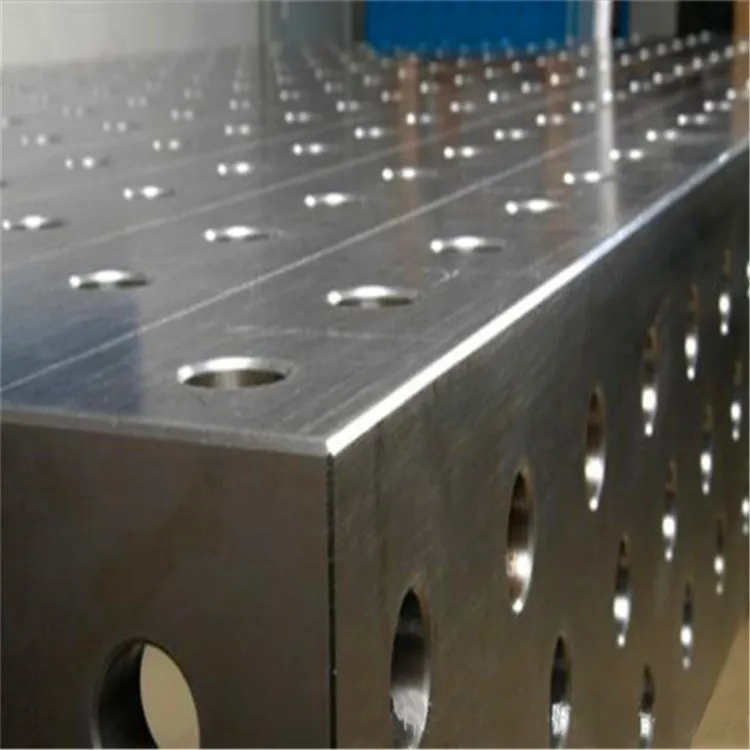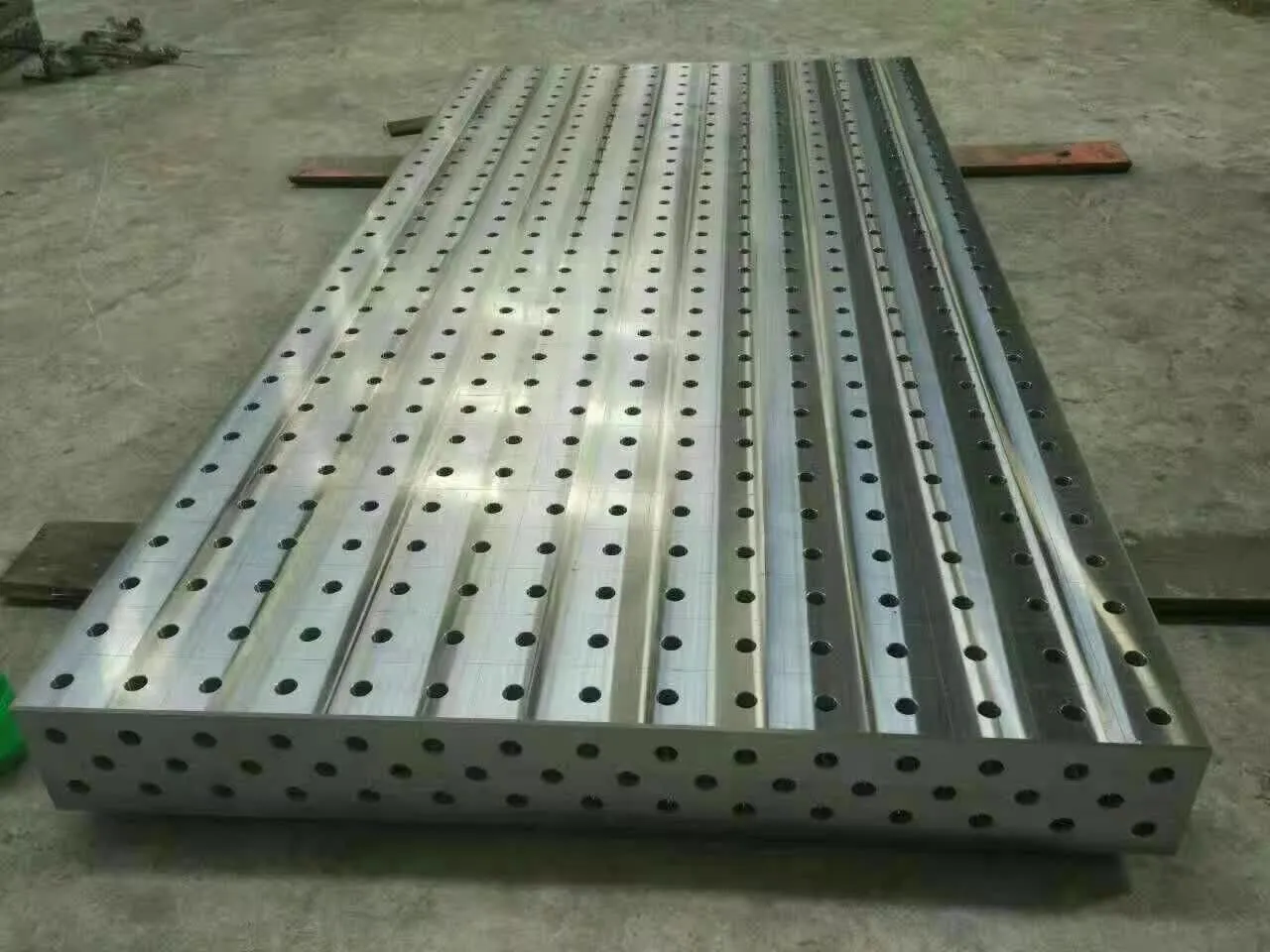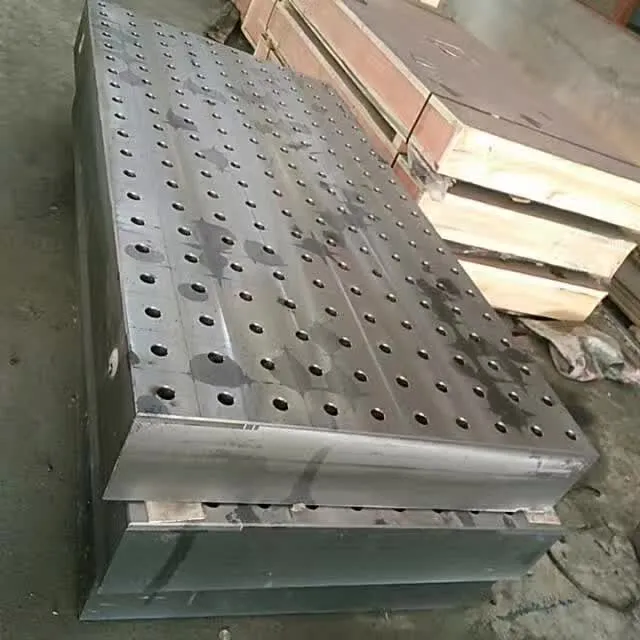May . 29, 2025 16:37 Laghachi na ndepụta
Design Features of a Welded Steel Workbench for Industrial Environments
Welding workbenches are foundational to industrial operations, providing stability, durability, and precision for tasks ranging from structural fabrication to intricate component assembly. Among the diverse options available—including steel welding tables for sale, cast iron welding tables for sale, and welded steel workbenches—the choice of design and material directly impacts performance. This article examines the engineering principles behind these workbenches, emphasizing material selection, structural integrity, and adaptability for industrial demands.

Steel Welding Table for Sale: Balancing Strength and Versatility
Steel welding tables are prized for their adaptability across industrial environments. Constructed from high-grade carbon steel or stainless steel, these tables offer exceptional load-bearing capacity and resistance to deformation under thermal stress. Key design features include:
Reinforced Joints: Welded seams and gusset plates ensure rigidity, critical for supporting heavy machinery or large components.
Slag-Resistant Surfaces: Textured or coated tops prevent spatter adhesion, simplifying cleanup and maintaining a smooth working area.
Modular Clamping Systems: Integrated T-slots or magnetic fixtures enable secure workpiece positioning, essential for repetitive welding processes like MIG or TIG.
Steel’s malleability allows customization, such as adjustable height mechanisms or foldable legs, making steel welding tables for sale suitable for both stationary workshops and mobile repair units. For high-heat applications, stainless steel variants resist oxidation, extending the table’s lifespan in corrosive environments. Additionally, hybrid designs combining steel frames with removable cast iron tops merge the strength of steel with the thermal stability of cast iron, ideal for mixed-use workshops.

Cast Iron Welding Table for Sale: Stability in Precision Work
Cast iron welding tables excel in environments requiring vibration dampening and thermal mass. The dense microstructure of cast iron absorbs mechanical shocks, minimizing distortion during grinding or hammering. Advantages include:
Heat Dissipation: Cast iron’s high thermal conductivity distributes heat evenly, reducing localized warping—a common issue in prolonged welding tasks.
Surface Flatness: Precision-machined tops ensure consistent contact for jigs and fixtures, critical for aerospace or toolmaking applications.
Cost-Effectiveness: While heavier than steel, cast iron welding tables for sale often require less frequent maintenance, lowering long-term operational costs.
However, cast iron’s brittleness limits its use in high-impact scenarios. For such cases, hybrid designs incorporating steel reinforcements at stress points are recommended. In foundries or forging facilities, cast iron welding tables are often paired with heat-resistant ceramic mats to further isolate thermal stress, enhancing durability.

Welded Steel Workbench: Robustness for Heavy-Duty Applications
A welded steel workbench is engineered for industrial rigor, combining durability with functional design. Key considerations include:
Material Thickness: Thicker steel plates resist bending under load, while ribbed undersides enhance torsional stiffness.
Corrosion Resistance: Powder-coated or galvanized finishes protect against rust in humid or chemical-laden environments, common in shipbuilding or automotive plants.
Mobility Features: Lockable casters or hydraulic lifts enable reconfiguration in dynamic workspaces without compromising stability.
These workbenches often integrate auxiliary features like tool trays or electrical outlets, streamlining workflows in high-volume manufacturing settings. For example, in automotive assembly lines, welded steel workbenches with integrated pneumatic clamps accelerate component alignment, reducing production time. The modularity of steel also allows for post-purchase modifications, such as adding overhead hoists or coolant drainage systems, to meet evolving industrial needs.
Welding Table Workbench: Configurations for Diverse Needs
The term welding table workbench encompasses designs tailored to specific industrial requirements:
Stationary Units: Fixed-leg tables with ground anchors provide unwavering stability for large-scale projects like pipeline welding.
Portable Designs: Lightweight, foldable frames cater to field repairs or construction sites, emphasizing ease of transport.
Modular Systems: Interchangeable tops or expandable surfaces allow scalability, adapting to evolving production lines.
Material choice further refines functionality. For instance, cast iron welding tables suit precision tasks, while steel welding tables dominate high-heat, high-load scenarios. In educational or training facilities, easy welding tables with simplified designs and safety features, such as rounded edges or fire-resistant coatings, provide beginners with a user-friendly introduction to welding techniques.
FAQS:About Industrial Easy Welding Table Workbenches
What distinguishes a steel welding table from a cast iron welding table in high-heat applications?
Steel welding tables tolerate rapid temperature fluctuations better than cast iron, which may crack under thermal shock. However, cast iron welding tables excel in steady-state heat dissipation, making them ideal for prolonged welding sessions.
How does a welded steel workbench enhance safety in industrial settings?
The welded steel workbench’s rigid construction minimizes vibration, reducing slippage risks. Non-slip surfaces and integrated grounding points further mitigate electrical hazards during arc welding.
Are cast iron welding tables suitable for mobile workshops?
Due to their weight, cast iron welding tables are less practical for mobility. Portable setups often prioritize steel welding tables or hybrid designs with lightweight alloys.
What features define an easy welding table for hobbyists?
An easy welding table emphasizes simplicity: foldable legs, lightweight materials like aluminum-composite panels, and pre-drilled clamping holes. These tables sacrifice some durability for affordability and ease of storage.
Can a welding table workbench be customized for specialized tasks?
Yes. Modular welding table workbenches allow add-ons like rotary fixtures or coolant trays, adapting to tasks such as robotic welding or plasma cutting.
From the rugged welded steel workbench to the vibration-resistant cast iron welding table, industrial workbenches are tailored to meet diverse operational demands. Steel welding tables for sale dominate dynamic environments requiring adaptability, while cast iron welding tables ensure precision in stable settings. Innovations like easy welding tables democratize access to quality tools, bridging the gap between professional and DIY needs. By prioritizing material properties and ergonomic design, industries can optimize productivity, safety, and longevity in welding operations. As technology advances, the integration of smart features, such as temperature sensors or automated clamping systems, promises to further revolutionize these essential workspaces.
-
Why the Right Angle Ruler Reigns in MetalworkingAkụkọJul.21,2025
-
The Enduring Allure of Granite Boxes in Modern InteriorsAkụkọJul.21,2025
-
The Digital Gauging Revolution: Reshaping Thread Rings Inspection's FutureAkụkọJul.21,2025
-
How Modern Inspection Platforms Transcend Surface MeasurementAkụkọJul.21,2025
-
How Customization Drives Wholesale Success in Parallel RulersAkụkọJul.21,2025
-
Fortifying Permanent Steel Ground Anchors Against Corrosion's OnslaughtAkụkọJul.21,2025
Ngwaahịa ndị emetụtara









